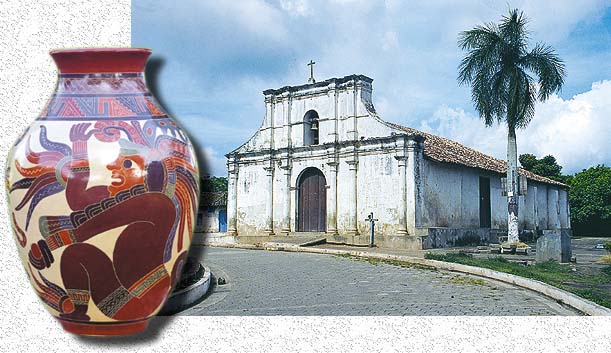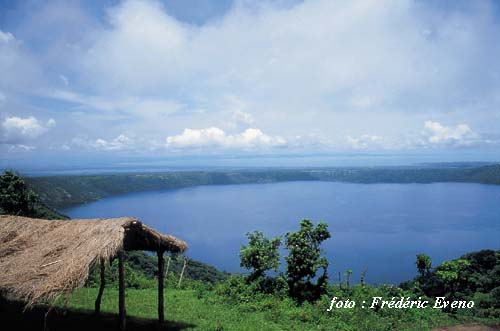 La
Laguna de Apoyo
La
Laguna de Apoyo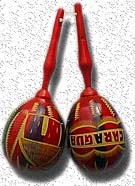 A
few kilometers from Managua there is a very verdant area which makes a
nice day trip. If you travel by car, don't take a lot of things in
the trunk, because you'll need the space to haul all of the craftswork
you will undoubtedly but by the roadside. The route from Masaya to
Granada ought to be called the "Route of the Artisans" because this region
produces a good portion of the artisans of Nicaragua.
A
few kilometers from Managua there is a very verdant area which makes a
nice day trip. If you travel by car, don't take a lot of things in
the trunk, because you'll need the space to haul all of the craftswork
you will undoubtedly but by the roadside. The route from Masaya to
Granada ought to be called the "Route of the Artisans" because this region
produces a good portion of the artisans of Nicaragua.
 La
Laguna de Apoyo
La
Laguna de Apoyo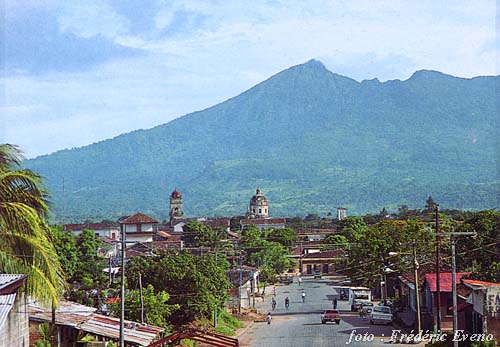
|
|
|
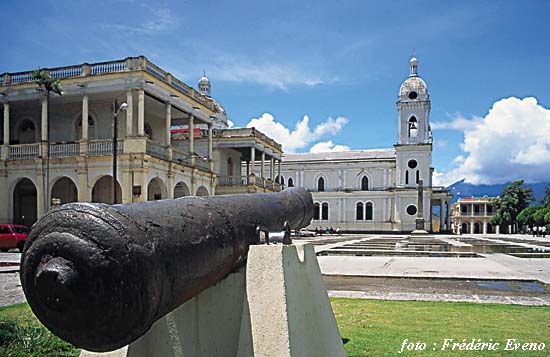 Granada
is situated on the shore of Lake Nicaragua. Like León, Granada was
formerly the capital of Nicaragua. It is undoubtedly still the country's
tourism capital. This was the first city founded by the Spanish on the
Pacific side of Nicaragua. From its past it retains the colonial aspect
which attracts so many tourists. Additionally, Granada is a port from whence
one may embark for Ometepe or for the San Juan River, crossing the great
lake.
Granada
is situated on the shore of Lake Nicaragua. Like León, Granada was
formerly the capital of Nicaragua. It is undoubtedly still the country's
tourism capital. This was the first city founded by the Spanish on the
Pacific side of Nicaragua. From its past it retains the colonial aspect
which attracts so many tourists. Additionally, Granada is a port from whence
one may embark for Ometepe or for the San Juan River, crossing the great
lake.
Near the city are the Islets, if you’re looking for some
recreation, and Mombacho Volcano if you want to trek through the tropical
jungle. Take care not to get lost on the volcano; thirty years ago a group
of fifteen college students were lost during a two week exploration of
the Mombacho jungle.
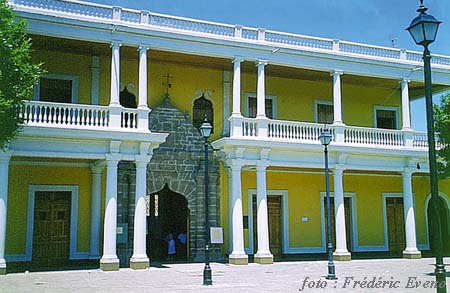 This
grand colonial building was almost totally destroyed by the fire of William
Walker in 1856. Only the stone doorway remained. Later it was
rebuilt, keeping the original stone doorway. It was recently purchased
and restored by the "Casa de Los Tres Mundos" (House of the Three Worlds),
and later donated by this foundation to the citizens of Granada, on the
condition that they maintain it as an international cultural center.
This
grand colonial building was almost totally destroyed by the fire of William
Walker in 1856. Only the stone doorway remained. Later it was
rebuilt, keeping the original stone doorway. It was recently purchased
and restored by the "Casa de Los Tres Mundos" (House of the Three Worlds),
and later donated by this foundation to the citizens of Granada, on the
condition that they maintain it as an international cultural center.
.
.
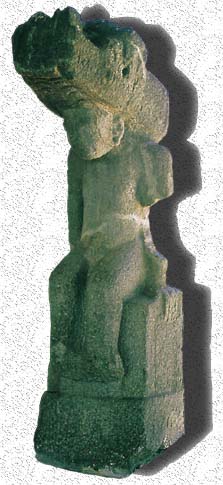 .
.
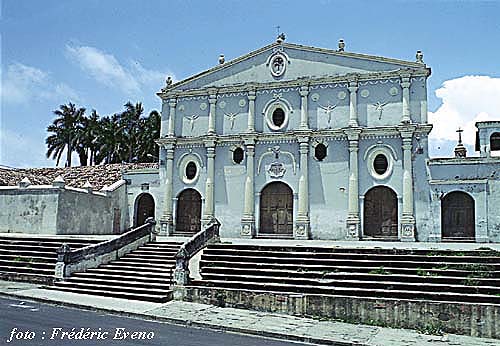
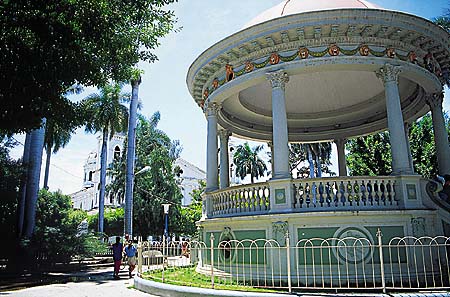 El
parque de Granada
El
parque de Granada
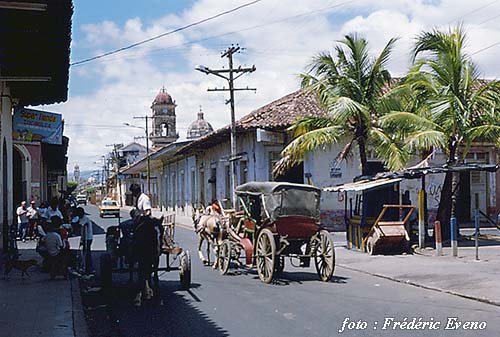
Masaya |
|
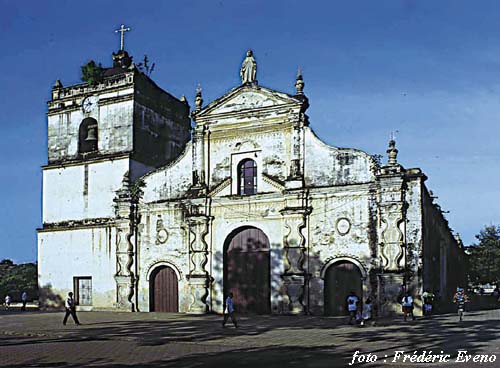
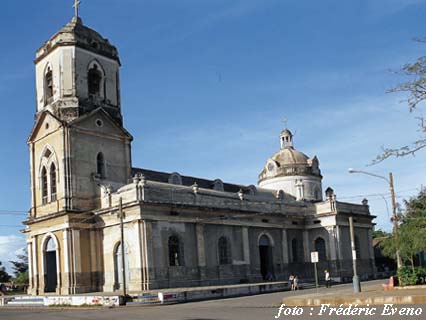 Masaya,
City of the Flowers, is located 30 km from Managua. It is the most important
center of crafts production in the country. You can obtain craftswork at
modest prices in the Market of Masaya. From the pier, you will have a wonderful
view of the lagoon and the Masaya Volcano. The city also has various colonial
churches.
Masaya,
City of the Flowers, is located 30 km from Managua. It is the most important
center of crafts production in the country. You can obtain craftswork at
modest prices in the Market of Masaya. From the pier, you will have a wonderful
view of the lagoon and the Masaya Volcano. The city also has various colonial
churches.
.
..
.
.
.
.
.
,
.
.
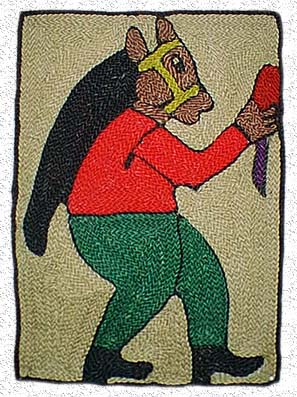 In
Masaya you will find beautiful woven textiles with motifs inspired by Nicaraguan
folklore. Without exception the most spectacular are the Masaya hammocks,
famous throughout the world for their quality and beauty, and exported
to many countries.
In
Masaya you will find beautiful woven textiles with motifs inspired by Nicaraguan
folklore. Without exception the most spectacular are the Masaya hammocks,
famous throughout the world for their quality and beauty, and exported
to many countries.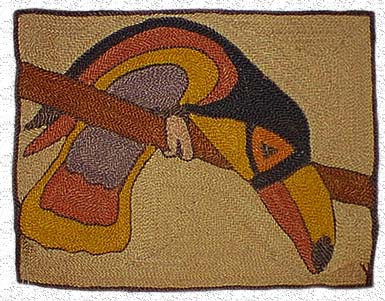

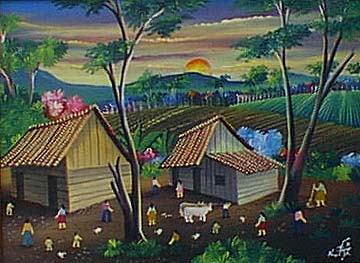 This
rural region, known for its folklore, is near Masaya. It has an average
elevation of 500 m, which gives it a cool climate ideal for coffee
growing. In Nicaragua coffee is grown in the shade of gigantic trees,
and accordingly, these are some of the most beautiful regions of Nicaragua.
The town of San Juan de Oriente produces pretty ceramics with precolombian
motifs.
This
rural region, known for its folklore, is near Masaya. It has an average
elevation of 500 m, which gives it a cool climate ideal for coffee
growing. In Nicaragua coffee is grown in the shade of gigantic trees,
and accordingly, these are some of the most beautiful regions of Nicaragua.
The town of San Juan de Oriente produces pretty ceramics with precolombian
motifs.
